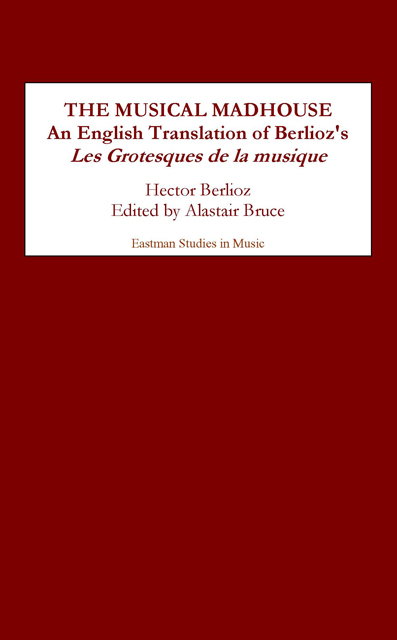A clarinet concerto
Published online by Cambridge University Press: 21 March 2023
Summary
Döhler had just announced a concert in a great German city, when a man he didn’t know came to call on him:
“Monsieur,” he said to Döhler, “my name is W***, I’m an accomplished clarinettist, and I’ve come to H*** with the intention of winning recognition of my talent. But I’m not well known here and you would do me a great service by allowing me to play a solo in the concert you’re organising. The impression I expect to make will bring me the favourable attention of the public, and I shall be indebted to you for giving me the chance to make my first concert a success.”
“What would you want to play in my concert?” replied Döhler obligingly.
“A splendid clarinet concerto.”
“Very well, Monsieur, I accept your offer; I shall include you in my programme; come to the rehearsal this evening; I’m delighted to help you out.”
Evening comes, the orchestra assembles, our man appears, and the rehearsal of his concerto begins. Following the fashion among some virtuosi he doesn’t bother to play his own part, confining himself to rehearsing the orchestra and indicating the tempi. The principal tutti, which was rather similar to the Peasants’ March in Der Freischütz, seemed quite outlandish to those who were there and worried Döhler. “But”, he said as he left, “the solo part will make up for it; this chap is probably a fine virtuoso; one can’t expect an ‘accomplished clarinettist’ to be a great composer as well.”
The following day, at the concert, somewhat intimidated by Döhler’s resounding success, the clarinettist came on stage in his turn. The orchestra played the tutti, ending on a held dominant chord before the first solo passage: “Tram, pam, pam, tira lira la re la”, just like the Freischütz march. The orchestra reached the dominant chord and stopped; the virtuoso planted himself on his left leg, thrust his right leg forward, put his instrument to his lips, and with both elbows stuck out sideways looked all set to begin. He blew out his cheeks and huffed and puffed and went bright red; all to no avail, for not a sound came from his rebellious instrument.
- Type
- Chapter
- Information
- The Musical MadhouseAn English Translation of Berlioz's <i>Les Grotesques de la musique</i>, pp. 24 - 25Publisher: Boydell & BrewerPrint publication year: 2003



